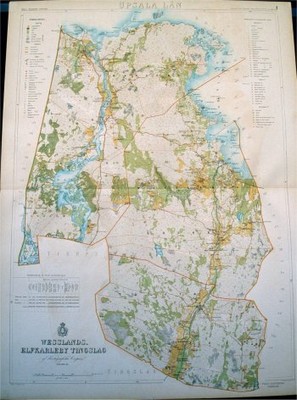31 oktober 1840 - 8 september 1923.
Edvard Erdmann, född 31 oktober 1840 i Stockholm, död 8 september 1923 i Saltsjö-Duvnäs, var en svensk geolog, son till Axel Erdmann och far till Axel Erdmann.
Erdman genomgick Teknologiska institutet, antogs 1861 såsom biträdande geolog vid Sveriges geologiska undersökning (SGU), var 1870-1910 geolog vid nämnda verk och var från 1871 tillika amanuens vid det därmed förenade, nybildade geologiska museet. Han var en av stiftarna av Geologiska Föreningen i Stockholm, i vilken han 1873-76 var sekreterare och 1882, 1888 och 1897 ordförande. År 1875 företog han, med statsbidrag, en vetenskaplig resa till Tyskland, Schweiz och England.
Såsom tjänsteman vid SGU utarbetade han de geologiska kartbladen Lindsbro (1865), Nyköping (1867), Baldersnäs (1870; tillsammans med David Hummel), Rydboholm[förtydliga] (1871), Breven (1878), Helsingborg (1881), Landskrona (1881), Askersund (1889) och Grisslehamn (1895), jämte åtföljande beskrivningar. Utöver nedanstående skrifter översatte och bearbetade han Archibald...
BLAEU, WILLEM JANSZOON (Guilielmus Janssonius).
1571-1638. Född i Uitgeest vid Alkmaar, död i Amsterdam.
Holländsk kartograf. 1591 kom han till Ven som elev till Tycho Brahe. Förutom astronomi lärde han sig även att arbeta med matematiska instrument, glober och kartor. 1596 slog han sig ned i Amsterdam där han grundade en affär med kartor och nautiska instrument. 1605 gav han ut en stor världsatlas i 18 delar. Senare följde en rad specialkartor och 1617 ett verk med sjökort, 'Licht der Zee-vaert', som även kom med fransk och engelsk text. 1629 gav han ut sin första hela atlas med 54 kartor. Av dessa hade han övertagit de flesta från Henr. Hondius. Under Willem Blaeus livstid följde fyra nyutgåvor, kompletterade med nya kartor. Verket fördes senare vidare av hans söner. Familjen Blaeus verksamhet spände över alla delar inom geografi, kosmografi, hydrografi, topografi etc. Firmans produktion är känd som sin tids yppersta kartografiska arbeten, och räknas dessutom till de vackraste kartarbeten som överhuvudtaget utförts.
Willem Blaeu förväxlas ibland med Jan Jansson (Johan Janssonius). Oftast gäller detta karto...
Bland arbeten.
Licht der Zee-vaert.
Nederl. biogr. , X. - Richter. - Tooley.
1626-1706.
Svensk bergsman och lantmätare. Efter studier i Uppsala blev han 1657 anställd vid Bergsväsendet. Då Tröndelag vid freden 1658 tillföll Sverige följde han som lantmätare den svenske regeringskommissarien Lorentz Creutz på dennes resa till Trondheim för att fastställa de nya gränserna. Förutom gränsmätningen utförde han även ett flertal grundplaner av Trondheim stad, Domkyrkan m.m. Efter att svenskarna drivits tillbaka från Norge, återupptog Nauclerus sin verksamhet i Bergsväsendet och blev 1665 chef vid Stora Kopparberget i Dalarna.
Vägvisare för XI Olympiaden i Berlin - 1936
Wesslands-Elfkarleby tingslag. 1862-63.
Olaus Magnus text till den berömda kartan "Carta Marina".
Texten finns även på katalanska, spanska och engelska.
Bureus karta över norden
Kartor och atlaser
Bilder och planschverk
Teckenförklaringar



